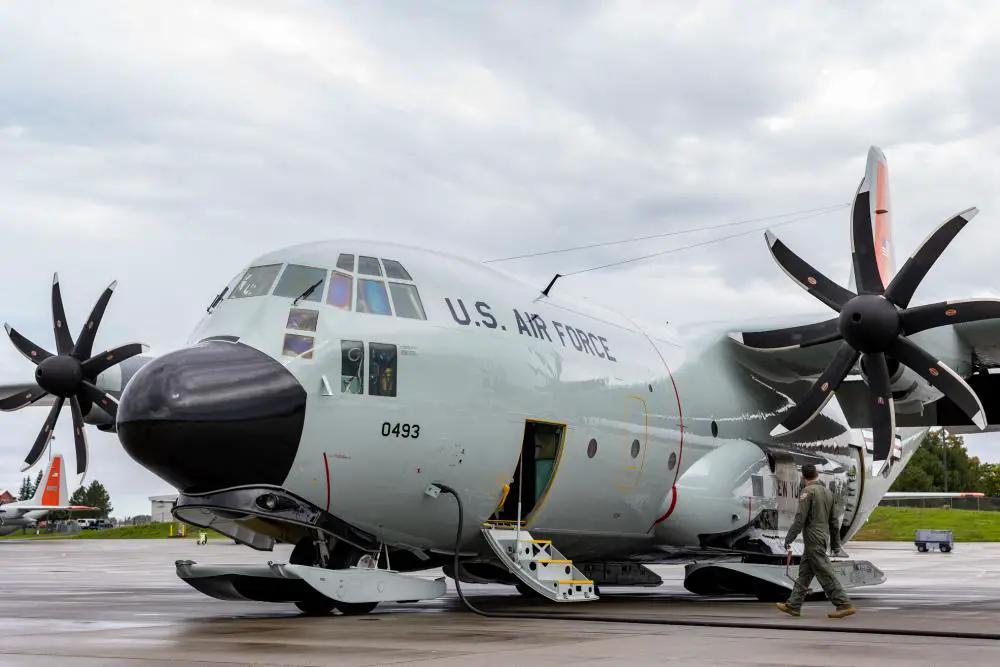The New York Air Guard’s 109th Airlift Wing flew a ski-equipped LC-130 outfitted with more powerful engines for the first time during a test flight at Stratton Air National Guard Base, October 11th. An aircrew of seven airmen conducted a test flight of an LC-130, equipped with new NP2000 T56-A-15A turbo-prop 3.5 upgrades. A turboprop is a hybrid engine that provides jet thrust and also drives a propeller. It is basically similar to a turbojet except that an added turbine, rearward of the combustion chamber, works through a shaft and speed-reducing gears to turn a propeller at the front of the engine. The new engine upgrades build upon the previous improvements of the NP2000 propellers, fully integrated into the fleet back in 2019, the NP200 propellers have eight blades instead of the four on the legacy engines.
“These new engines will be a game changer for the unit. Combined with the LC-130H’s NP2000 eight bladed propellors, this 3.5 engine is the finishing piece to the NP2000 system; modernizing the 109th’s fleet into a more powerful polar airlift force” said Master Sgt. Christopher Dumond, a flight engineer with the 109th.
“The power in these new upgrades is apparent in the seat. The difference is something we definitely have to adjust for but, it improves our capabilities and makes us more effective,” said Major Patrick Newton, a pilot with the 109th.
“The engine includes an upgraded compressor and improved turbines and those allow for a lot of improvements and cost savings in both the maintenance and operations worlds,” Senior Master Sgt. Jared Nardi, the senior enlisted leader of the 109th Airlift Wing’s maintenance propulsion section.

Because the 109th Airlift Wing operates the Department of Defense’s only ski-equipped LC-130 Hercules aircraft, the wing deploys annually to the cold and austere environments of Greenland and Antarctica in support of the National Science Foundation (NSF). These high-tech propellers increase torque for accelerate takeoffs on ice and snow, and streamline maintenance requirements. The wing provides heavy airlift and transport to the NSF in both of these locations. Occasionally, the skibirds have trouble taking off from icy surfaces of these areas of operation, due to heavy cargo loads or friction lock under the skis. Previously, jet-assisted takeoff (JATO) bottles were attached to the aircraft and used to create extra thrust to get the skibirds off the snow or ice and into the air. JATO production, however, ended in 1991. Upgraded engines, and their capabilities, will fill that void.
The upgrades also offer a myriad of benefits and improvements to maintenance and operations personnel, ranging from increased fuel efficiency to actual money saved on man hours and maintenance costs. The future of the program will have the wing overhauling the engine systems of an additional four aircraft by their next flying season in Greenland in April of 2023, and the entire fleet by the following Operation Deep Freeze deployment of 2023 and 2024. The 109th’s LC-130 Hercules is the largest ski-equipped aircraft in the world, capable of landing on ice and snow in polar environments. As the only unit to fly the LC-130H, the 109th continues to provide airlift support to the National Science foundation in Antarctica and Greenland. Currently all LC-130 aircraft are operated by the New York Air National Guard and are based at the Air National Guard’s facility at Schenectady County Airport. There are two versions. Seven aircraft are LC-130H-2.












